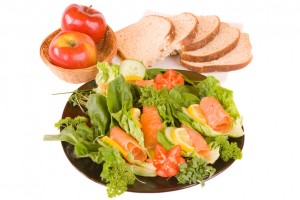School Meals
There has been much recent media debate about the quality of food students receive at school. It is true that a school’s catering arrangements can influence the behaviour of students and their achievement in lessons. It is something you will want to take into consideration when choosing the right school for your child.
- In secondary schools, the canteen can either be run by the LEA catering service, a private contractor, or by the school itself.
- There have undoubtedly been issues with some private catering firms, which have allegedly put profit before quality when catering for children.
- However, some arrangements between schools and private caterers have been tremendously successful, often because the caterer has had the funding to promote the food so that students stay in school to eat it.
- The right school for your child will have made connections between the performance of their students and the food that they eat. For example, some schools ensure that there are no drinks on sale in their canteen with additives which could induce hyper-activity in young people.
- Some schools, particularly those which manage catering themselves, have established healthy eating practices.
- The success of a school’s food provision depends in part on the quality and size of their site. If they have a spacious site, then they can afford to keep all students on the premises at lunchtimes, and therefore have greater control over what children eat. If they have a small site, then they may have to allow students off site at lunchtimes. In this case, schools have little control over what students eat, as children will always prefer the local burger bar to anything, whatever its quality, that is provided in the school canteen.
- A school’s lunchtime is often when the atmosphere appears most unstable. This is because students can be difficult to supervise during a long lunch interval and, apart from a few senior staff, supervision is usually carried out by midday assistants who do not have the authority and the training of teachers.
- If a school has an adequately sized dining room, it is likely that their eating arrangements will be more civilised.
- If a school has made the eating area appealing, and somewhere where students can relax, then it is likely that eating arrangements will be more civilised.
- If a school is accredited as a Healthy School this shows they are taking healthy eating seriously.
- A school that is serious about improving its catering will involve parents and students in their decision making.
- Some schools have contracts with companies to provide vending machines on site. Often what is provided by these machines is not what parents would consider healthy food.
- A canteen that is trying hard to attract students will have a range of choices, snacks at break times, hot and cold meal options, sandwiches and full meals.
- All schools should have a Food Technology Department.The right school for your child will have links between this department and school catering to ensure that what students learn about food in lessons informs what food is provided for them at meal times.
- The take up rate for meals is a good indication of how hard a school is trying to cater appropriately for students. If most students eat out of school, or bring a packed lunch, then these are not good signs. It is a very good sign if staff eat in the canteen, because they are usually more interested in healthy food than the students and usually have more opportunities than the students to eat elsewhere. Also, if staff not only get their food from the canteen but eat there as well, rather than taking their food to the staff room, then the canteen atmosphere will normally be more inclusive and relaxed.
- The government provides free school meals to students whose parents access benefits.The percentage of students eligible for free school meals is often used as a gauge to assess the level of deprivation amongst a school’s cohort.
- Some schools have imaginative eating arrangements to facilitate a more pleasant lunchtime for students. For example, it is a common practice to split lunchtimes so that older students eat at a different time to younger students.
Further Information
Open Evening
Ask how many students have school dinners. Find out whether students are allowed out of school at lunchtime,and if they are,where do they usually eat. Visit the Food Technology department; ask what connections they have with school catering. Ask how many students the canteen holds at one time, and what system the school uses to get all the students through the canteen at lunchtime. Ask how parents and students are involved in decisions about catering arrangements.
Prospectus
The prospectus should indicate whether the school has Healthy School status. Some schools’ literature will contain an example of a day’s menu.
Visit
Make sure you see the canteen. It should be designed in a way that is appealing to students. If possible, visit at lunchtime.This will give you a good insight into the atmosphere and attitude towards food. Is there material on display, for example, promoting healthy eating? Ask the student showing you round what they think about school meals.Don’t take their answer at face value. For example, they might love the food because it is always burgers and chips. Ask them what is actually on offer to students. Ask them how many staff eat in the canteen.

Add a comment